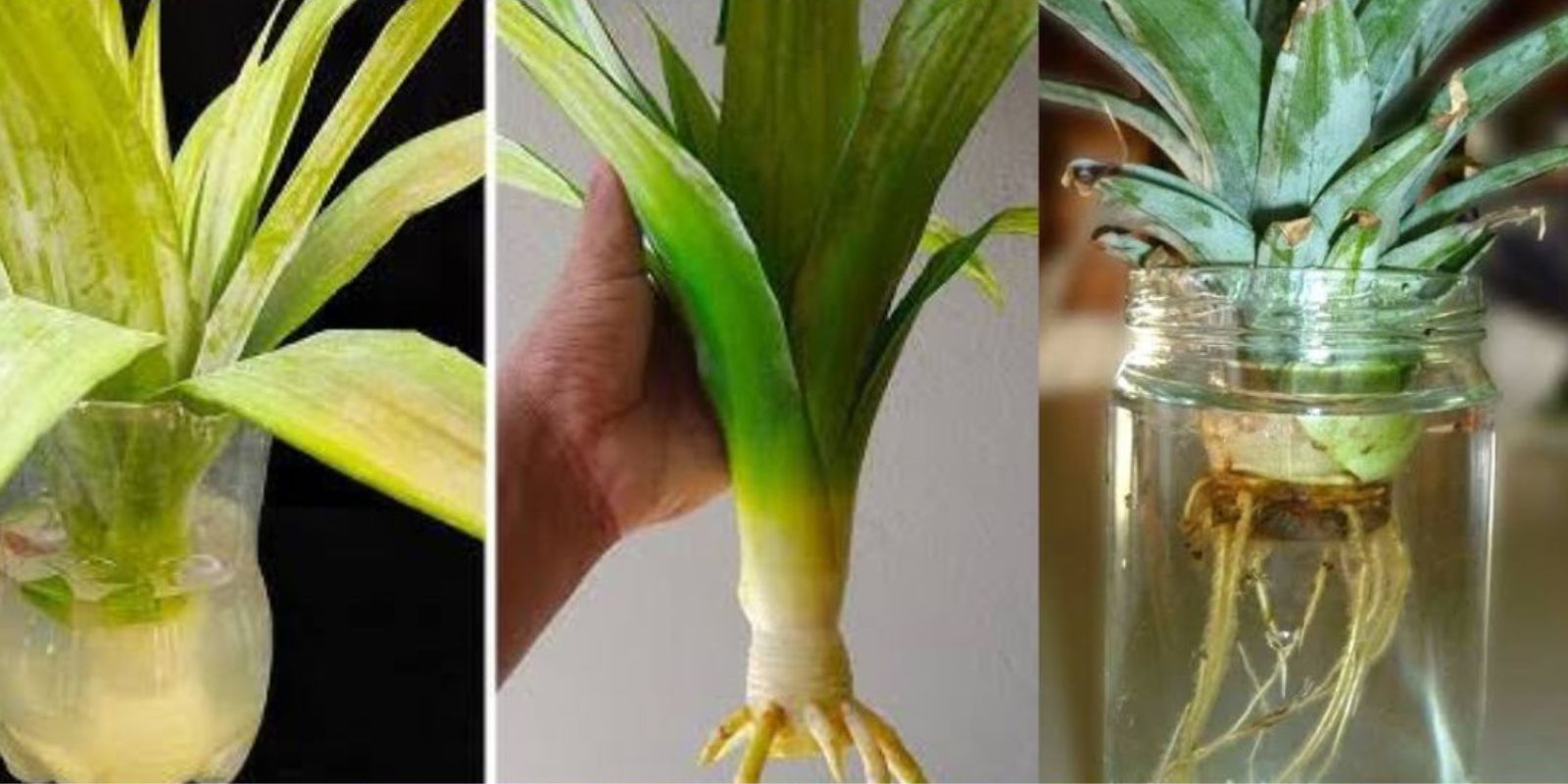Growing a pineapple at home from leftover scraps might sound like a tropical dream, but it’s surprisingly simple and incredibly rewarding. Not only does this method breathe new life into kitchen waste, but it also allows you to grow a vibrant, ornamental plant with the potential for fresh, homegrown fruit. Whether you’re an experienced gardener or a beginner, this guide will help you turn a pineapple crown into a thriving plant.
Why Grow Pineapples at Home?
Pineapples are versatile plants that require minimal space and resources. Here are some benefits of growing your pineapple:
- Eco-Friendly Gardening: Reusing scraps reduces food waste.
- Aesthetic Appeal: The pineapple plant adds a tropical touch to any home or garden.
- Easy Maintenance: These plants thrive with basic care and attention.
- Fruit Production: With patience, you can enjoy a delicious, homegrown pineapple.
Now, let’s dive into the step-by-step process of growing a pineapple from scraps.
Step 1: Select a Healthy Pineapple Crown
The first step to growing your pineapple is choosing the right starting material. Follow these guidelines:
- Pick a Fresh Pineapple: Choose a ripe pineapple with healthy, green leaves at the top. Avoid crowns with yellowing, browning, or wilting foliage.
- Cut the Crown Properly: Using a sharp knife, cut off the leafy top of the pineapple along with about an inch of fruit flesh.
Pro Tip: You can also twist the crown gently to separate it from the fruit without cutting.
Step 2: Prepare the Pineapple Crown
Preparing the crown properly is essential for successful rooting.
- Remove Lower Leaves: Peel off a few layers of leaves at the base of the crown to expose the root buds. These small bumps are where new roots will develop.
- Dry the Crown: Allow the crown to dry for 1-2 days in a shaded area. This step helps prevent rot when you place it in water or soil.
Step 3: Root the Crown in Water
Rooting the pineapple crown in water is an exciting step as you’ll witness the roots developing.
- Use a Glass Container: Place the base of the crown in a clear glass filled with water, ensuring only the bottom is submerged.
- Change the Water Regularly: Replace the water every 2-3 days to keep it fresh and prevent bacteria or mold from forming.
- Observe Root Growth: Within 2-3 weeks, you’ll notice white roots sprouting from the base.
Pro Tip: Keep the glass in a spot with bright, indirect sunlight during this stage.
Step 4: Plant the Rooted Crown in Soil
Once the roots are about an inch long, it’s time to transfer your pineapple crown to soil.
- Choose the Right Pot: Use a pot with good drainage holes to prevent waterlogging. A 6-8 inch pot is sufficient for a start.
- Prepare the Soil: Pineapples thrive in well-draining soil. Use a mix of sandy soil, potting mix, and organic compost.
- Plant the Crown: Place the crown in the soil, ensuring the base is covered while the leaves remain above ground. Firmly press the soil around the plant to secure it.
Step 5: Provide Optimal Growing Conditions
Pineapple plants thrive in warm, sunny environments with moderate care.
- Sunlight: Place your pot in a location with at least 6-8 hours of sunlight daily. Indoors, a bright windowsill or balcony is ideal.
- Watering: Water the plant sparingly, keeping the soil slightly moist but never soggy. Pineapples are drought-tolerant, so avoid overwatering.
- Humidity: Pineapples enjoy moderate humidity. Mist the leaves occasionally, especially if the air is dry.
Step 6: Care for Your Growing Pineapple Plant
As your pineapple grows, consistent care will ensure its health and vitality.
- Fertilization: Feed the plant with a balanced liquid fertilizer every 4-6 weeks during the growing season.
- Pruning: Remove any dead or yellow leaves to promote healthy growth.
- Repotting: If the plant outgrows its pot, transplant it into a larger container or a garden bed.
Step 7: Be Patient for Fruit Production
Growing a pineapple fruit requires time and patience. Typically, it takes 2-3 years for a pineapple plant to produce its first fruit. Here’s what to expect:
- Flower Formation: The plant will develop a central flower stalk, which eventually turns into the fruit.
- Ripening: Allow the pineapple to ripen on the plant for the sweetest flavor. Once it turns golden yellow, it’s ready to harvest.
Optional Step: Keep Propagating
After harvesting your first pineapple, don’t stop! Each plant can produce new offshoots, called “pups” or “slips,” around its base. These can be replanted to grow additional pineapple plants.
Common Issues and Solutions
Growing pineapples is generally straightforward, but here are some potential problems and how to address them:
- Rotting Crown: Ensure the crown is dried properly before planting, and avoid overwatering.
- Pest Infestation: Inspect regularly for pests like aphids or mites. Use organic insecticidal soap if needed.
- Slow Growth: Provide adequate sunlight and check that the soil is well-draining and nutrient-rich.
Why This Method Works
Pineapple plants are hardy and adaptable, making them ideal for home gardening. By rooting the crown, you replicate the plant’s natural propagation process. This low-cost, sustainable method not only grows a new plant but also reduces waste from discarded fruit tops.
Conclusion: Turn Scraps into Sustainability
Growing a pineapple from scraps is more than just a fun project; it’s an excellent way to embrace eco-friendly gardening and experience the joy of nurturing a plant from start to finish. With minimal effort and a little patience, you’ll soon have a thriving pineapple plant that adds greenery to your home and a tropical vibe to your garden.
So, what are you waiting for? Start growing your pineapple today and share your progress with fellow gardening enthusiasts.


